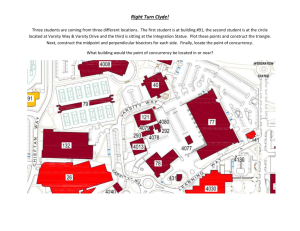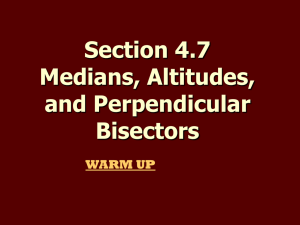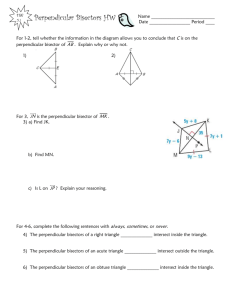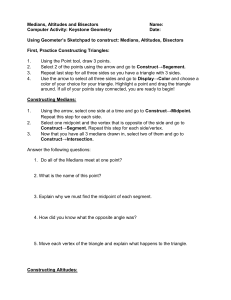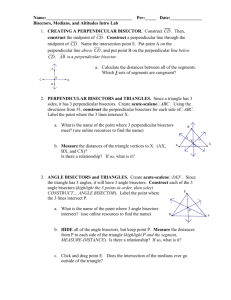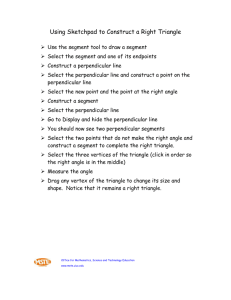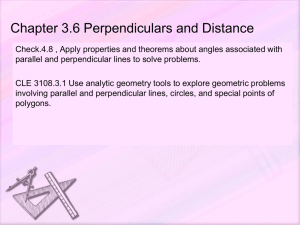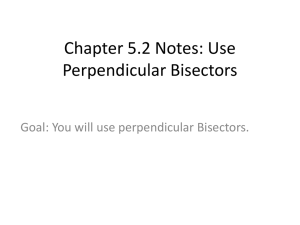Vector proofs of concurrency
advertisement
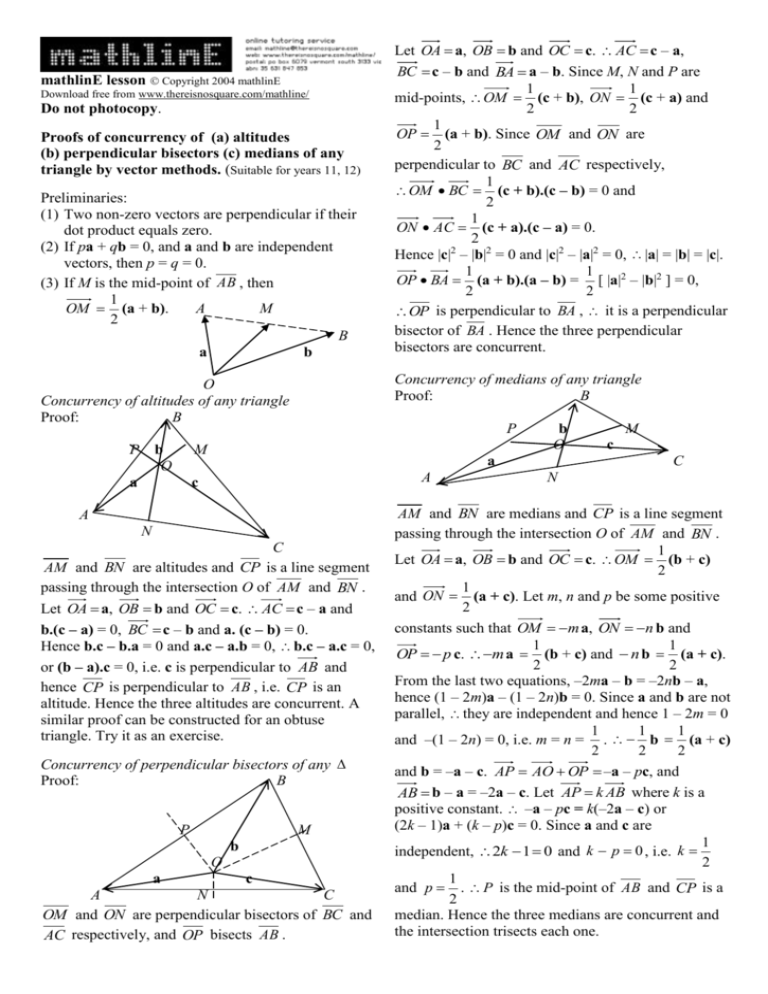
mathlinE lesson Copyright 2004 mathlinE Download free from www.thereisnosquare.com/mathline/ Do not photocopy. Proofs of concurrency of (a) altitudes (b) perpendicular bisectors (c) medians of any triangle by vector methods. (Suitable for years 11, 12) Preliminaries: (1) Two non-zero vectors are perpendicular if their dot product equals zero. (2) If pa + qb = 0, and a and b are independent vectors, then p = q = 0. (3) If M is the mid-point of AB , then 1 OM (a + b). A M 2 B a b Concurrency of medians of any triangle Proof: B O Concurrency of altitudes of any triangle Proof: B P b O a Let OA a, OB b and OC c. AC c – a, BC c – b and BA a – b. Since M, N and P are 1 1 mid-points, OM (c + b), ON (c + a) and 2 2 1 OP (a + b). Since OM and ON are 2 perpendicular to BC and AC respectively, 1 OM BC (c + b).(c – b) = 0 and 2 1 ON AC (c + a).(c – a) = 0. 2 Hence |c|2 – |b|2 = 0 and |c|2 – |a|2 = 0, |a| = |b| = |c|. 1 1 OP BA (a + b).(a – b) = [ |a|2 – |b|2 ] = 0, 2 2 OP is perpendicular to BA , it is a perpendicular bisector of BA . Hence the three perpendicular bisectors are concurrent. P M b O a A c A N C AM and BN are altitudes and CP is a line segment passing through the intersection O of AM and BN . Let OA a, OB b and OC c. AC c – a and b.(c – a) = 0, BC c – b and a. (c – b) = 0. Hence b.c – b.a = 0 and a.c – a.b = 0, b.c – a.c = 0, or (b – a).c = 0, i.e. c is perpendicular to AB and hence CP is perpendicular to AB , i.e. CP is an altitude. Hence the three altitudes are concurrent. A similar proof can be constructed for an obtuse triangle. Try it as an exercise. Concurrency of perpendicular bisectors of any Proof: B P M b O a c A N C OM and ON are perpendicular bisectors of BC and AC respectively, and OP bisects AB . M c C N AM and BN are medians and CP is a line segment passing through the intersection O of AM and BN . 1 Let OA a, OB b and OC c. OM (b + c) 2 1 and ON (a + c). Let m, n and p be some positive 2 constants such that OM m a, ON n b and 1 1 OP p c. m a (b + c) and n b (a + c). 2 2 From the last two equations, –2ma – b = –2nb – a, hence (1 – 2m)a – (1 – 2n)b = 0. Since a and b are not parallel, they are independent and hence 1 – 2m = 0 1 1 1 and –(1 – 2n) = 0, i.e. m = n = . b (a + c) 2 2 2 and b = –a – c. AP AO OP –a – pc, and AB b – a = –2a – c. Let AP k AB where k is a positive constant. –a – pc = k(–2a – c) or (2k – 1)a + (k – p)c = 0. Since a and c are 1 independent, 2k 1 0 and k p 0 , i.e. k 2 1 and p . P is the mid-point of AB and CP is a 2 median. Hence the three medians are concurrent and the intersection trisects each one.
